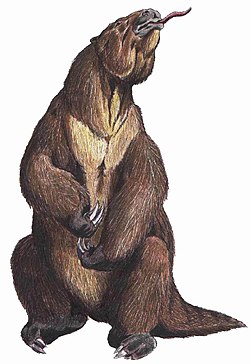| Huilabradys | |
|---|---|
| Scientific classification | |
| Domain: | Eukaryota |
| Kingdom: | Animalia |
| Phylum: | Chordata |
| Class: | Mammalia |
| Order: | Pilosa |
| Family: | † Nothrotheriidae |
| Subfamily: | † Nothrotheriinae |
| Genus: | † Huilabradys Villarroel, 1998 |
| Species: | †H. magdaleniensis |
| Binomial name | |
| †Huilabradys magdaleniensis Villarroel 1998 | |
Huilabradys is an extinct genus of ground sloths of the family Nothrotheriidae that lived in what is now Colombia. Huilabradys was discovered in the strata of the La Tatacoa desert in the Huila department, in the Villavieja Formation, and is part of the so-called La Venta fauna, a fossiliferous location from the mid-Miocene period that has provided a notable paleontological contribution on the Miocene faunas of northern South America. The remains discovered are basically fragments of the jaws and teeth, allowed the identification of this species, whose only species is Huilabradys magdaleniensis, and was classified as a member of the nothrotheriid subfamily Nothrotheriinae, which comprises small to medium-sized species of ground sloths. [1]

